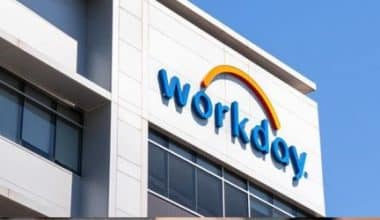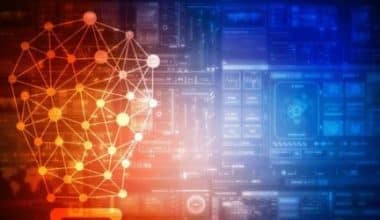I’ll be honest: “Information systems” is perhaps one of the most ambiguous concepts I’ve ever heard. Massive amounts of data are what initially sprang to mind, and after some research, I discovered that my initial assumption wasn’t too far off. It encompasses a wide variety of factors that contribute to organizational performance, like many ambiguous concepts in the business sector. So what is the definition of information systems in a computer? In this guide, we’ll discuss the definition of geographic and management information systems, as well as some concrete examples and suggestions for creating your information system strategy.
Information Systems Definition
When people hear the phrase “information system” for the first time, they frequently assume it refers to some kind of program that stores information or something similar. The name does sound that way. An information system, however, is much larger than that. Consequently, what is the definition of information systems?
An information system includes software, hardware, and telecommunication networks To gather usable data, particularly within an organization. To complete and manage their operations, engage with their customers, and outperform their rivals, many businesses rely on information technology. Some businesses today, including Google, Alibaba, Amazon, and eBay, are entirely supported by information technology.
Typical Components of Information Systems
Let’s examine the components of information systems now that you are familiar with it. Hardware, software, data, and communications make up its five parts.
#1. Hardware
The technology’s physical part is represented by this. Among them are laptops, hard drives, keyboards, iPads, etc. While its speed and storage capacity has substantially grown, the cost of the hardware has reduced quickly. But today, there is a lot of concern about how using hardware may affect the environment. Storage services are now provided in the cloud, which is accessible via communication networks.
#2. Software
System software and application software are the two categories of software that can exist. An operating system known as the system software allows the user to control the PC through a graphical user interface (GUI) while it handles the hardware, program files, and other resources. Application software is made to perform specific duties on behalf of users. Application software manages certain tasks, whereas system software makes the hardware usable.
Microsoft Windows is a perfect example of system software, whereas Microsoft Excel is an example of application software.
Large companies may use licensed programs created and maintained by software development firms to meet their unique demands. The program may be open source or proprietary and accessible for free online.
#3. Data
Data is a collection of information that is useless on its own, but it may be very effective for business operations when it is gathered and arranged. Businesses gather all the data and utilize it to inform decisions that may be evaluated for operational effectiveness.
#4. Telecommunications
Telecommunication is used to communicate with a computer system or other devices to transmit information. Either wired or wireless methods can be used to set up the network. Coaxial cable and fiber optics are examples of wired technologies, whereas radio waves and microwaves are examples of wireless technologies.
Geographic Information Systems Definition
A Geographic Information System (GIS) is a software framework that combines geographic elements with other datasets to map, analyze, and rate actual geospatial issues.
The geographic component of GIS is essential because it indicates that some of the data being examined by a GIS are geographical. It involves information about locations on the Earth, in other words. Additionally, what is known as attribute data is typically added to this geospatial data to enhance it. A general definition of attribute data is additional information about each spatial feature.
The precise position of a retailer (the spatial data) that has been enhanced with attribute data such as the business’s name, brand, and kind of retail property is an example of this.
The combination of these two data types makes GIS an efficient tool for problem-solving that serves as the foundation for the development of geospatial intelligence.
Why Geographic Information Systems are Important?
Geographic information systems are crucial because they make it simpler for businesses to view and analyze location-based data. Many decisions are complicated by location data, and firms that want to make smart decisions frequently need to do in-depth analysis. Quick identification and improved decision-making about people, places, and patterns of interest are made possible by effective GIS.
You can utilize geospatial analytics to build informative models of various location-centric scenarios with the aid of GIS. You may use this to maximize the decisions and actions of your business by visualizing and analyzing various outcomes.
Today’s location data flood requires GIS to analyze enormous files and provide exceptional platform stability. To help GIS professionals make accurate and effective business decisions, highly performant raster data processing is frequently needed so users can build powerful visualizations.
Information System Examples
Nearly any corporate operation can be enhanced by information systems, but here are a few effective uses for them. The following are some examples of the definition of information systems:
#1. Expert systems:
Information systems use AI, which is always improving to replicate human problem-solving. To solve problems and make judgments, expert systems utilize the knowledge that would typically need to be provided by a subject matter expert. It can discover viruses or resolve accounting issues in a commercial setting.
#2. Office automation systems:
Numerous hours that would otherwise be spent on simple activities are saved by automation. Office automation systems implement more effective procedures by fusing human resources with computer and communication technology. For instance, a COO could plan monthly company-wide email updates that incorporate AI-generated progress reports.
#3. Process control systems:
Process control systems are the answer if you’re seeking a means to use information systems in product manufacturing. They are typically used to make sure a product meets specified requirements and depend on inputs from sensors to generate particular outputs. A simple example is a thermostat, which activates the heat when the temperature falls below a predetermined level. You might want to adjust your process controls if you frequently receive negative feedback from clients about the actual products you generate.
Types of Information Systems
There are different types of information systems by definition, and the kind of system a firm chooses will depend on its goals and objectives. The four primary categories of information systems are as follows:
#1. Operations support systems
Operation support systems are the first class of information systems. A particular kind of business operation is primarily supported by this kind of information system. The transaction processing system used by all banks worldwide serves as an illustration. The service provider can evaluate a certain company procedure thanks to this kind of information system.
#2. Management information systems
The company can carry out its primary duties thanks to the integration of hardware and software that makes up this second category of information systems. They assist in gathering data from many web systems. The system does not save the data that is thus received; instead, it analyzes it usefully to aid in the management of an organization.
#3. Decision support systems
An organization can decide on its operations based on knowledge using decision support systems. It examines information that is constantly changing and cannot be predicted. It can be applied to fully automated or manually controlled systems. However, a mix of human and computer-operated systems is advised for the best effectiveness.
#4. Executive information systems
The final type of management support system is called executive support, or EIS. They support an organization’s senior decision-making.
Management Information Systems Definition
The study of people, technology, organizations, and their relationships is known as management information systems (MIS). MIS specialists assist businesses in getting the most out of their investments in people, technology, and operational procedures. MIS is a people-focused industry with a focus on providing services using technology. A degree in MIS might be right for you if you’re interested in technology and want to utilize it to make people’s lives better.
MIS Professionals Make Business Better
To gather, process, and store data, businesses use information systems at every level of operation. To create the information needed to run the firm daily, management gathers and disseminates this data. Information systems are used by everyone in the business world, from those who handle billing to those who decide who gets hired.
A computer database could be used by a vehicle dealership to monitor the best-selling items. A retail establishment may employ a computer-based information system to conduct online sales. To gain a competitive advantage over other companies, many (if not most) firms focus on MIS goal alignment.
For data management (i.e., storing, searching, and analysis of data), MIS specialists develop information systems. They also oversee a variety of information systems to serve the demands of managers, employees, and clients. MIS experts can play a significant role in areas like information security, integration, and exchange by cooperating with other members of their work group as well as with their customers and clients. You may improve the efficacy and efficiency of your firm by learning how to creatively design, implement, and use business information systems as an MIS major.
How to Build an Information System Strategy
It takes time and effort to craft a unified information system strategy; it cannot be done with the click of a mouse.
#1. Identify the goals and information needs of your company.
Your plan should be based on your goals. Refer to your KPIs if you’re unsure. Which metrics are you falling short of? You might actively promote yourself as a customer-friendly solution, yet a poll reveals that client satisfaction is 20% lower than your benchmark.
#2. Create a plan for how to enhance your current system.
You probably already have some sort of infrastructure for information systems; you simply need to polish it. For instance, you can have a data warehouse with a ton of client information but no customer relationship management (CRM) software.
This offers the chance to choose and alter CRM software depending on current data. Always keep your money and other resources in mind while considering how to enhance your system. Not all plans are reasonably priced.
#3. Create and put into action your new system.
Depending on the needs of your business, you’ll develop a list of specs and requirements that your system must satisfy at this phase. For example, you may consider the following questions:
- What methods will you use to gather, combine, and access data?
- What software is necessary, and how will it be modified?
- Is it necessary to upgrade hardware to support new software?
- Describe the integration of your applications.
Why Your Organization Needs Information Systems
The foundation for making data-driven decisions is information systems. Organizations can use the information it provides to spot and fix procedural problems by making sense of enormous amounts of data. Without it, your company would continue to suffer from the same outdated inefficiencies that slow it down.
An organization can, for instance, centralize its information resources by strengthening its information systems strategy, which would reduce confusion and transform a dispersed office into an efficient machine. Your customers and workers will be happy as a result.
What Are the 5 Main Components of an Information System?
The following five elements are listed as part of an information system:
- Computer hardware.
- Computer software.
- Telecommunications.
- Databases and data warehouses.
- Human resources and procedures.
What Are the Four Main Concepts of an Information System?
The basic building blocks of an information system are hardware, software, databases, networks, and people. To accomplish input, processing, output, feedback, and control, these five elements work together.
What Are the Six Critical Elements of an Information System?
There are six main parts that makeup information systems: hardware, software, network connections, data, people, and processes.
What Are the Major Roles of Information Systems?
Users of information systems can gather, store, organize, and distribute data—tasks that can be useful for businesses for several reasons. To manage resources and boost productivity, many organizations employ information systems.
What Part of an Information System Is Most Important?
The most crucial part of an information system is its users. This is so that the hardware and software can process data as they should, which is their responsibility. The technological elements of information systems are sometimes given more attention than the people in charge of them.
Conclusion
You’ve read about the definition of information systems in this article and seen some examples. We also talked about all of the parts and functions of information systems.
Related Articles
- MANAGEMENT INFORMATION SYSTEMS (MIS): Definition and All You Need To Know
- Marketing Information System: Best Practices & All You Need
- GEOGRAPHIC SEGMENTATION: Best Practices to Scale Business With Examples.
- MARKETING SEGMENTATION: Definition, Examples, Strategy, Variables & Importance
- INFORMATION SYSTEMS: Meaning, Examples, Types & Courses






